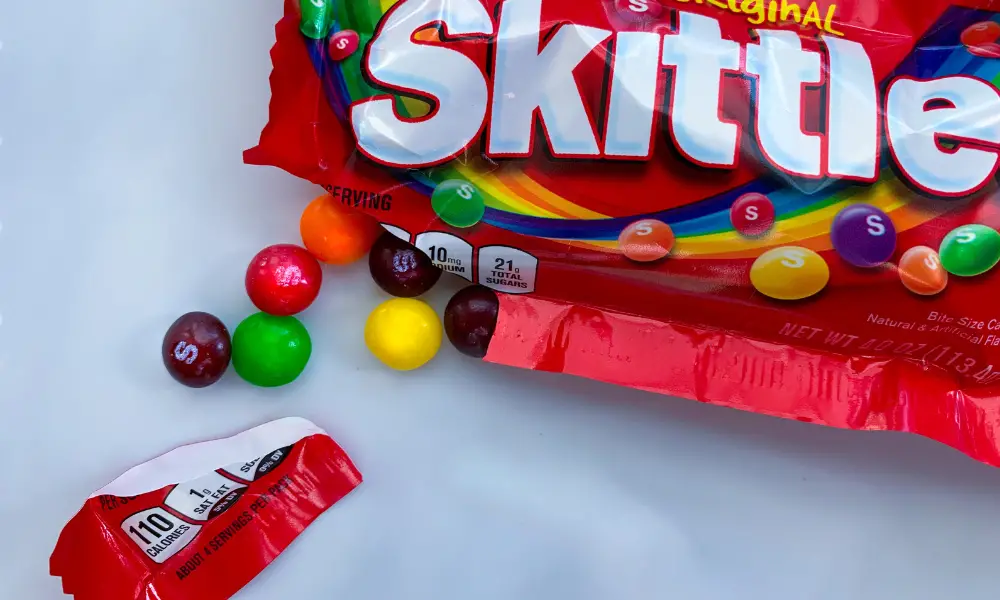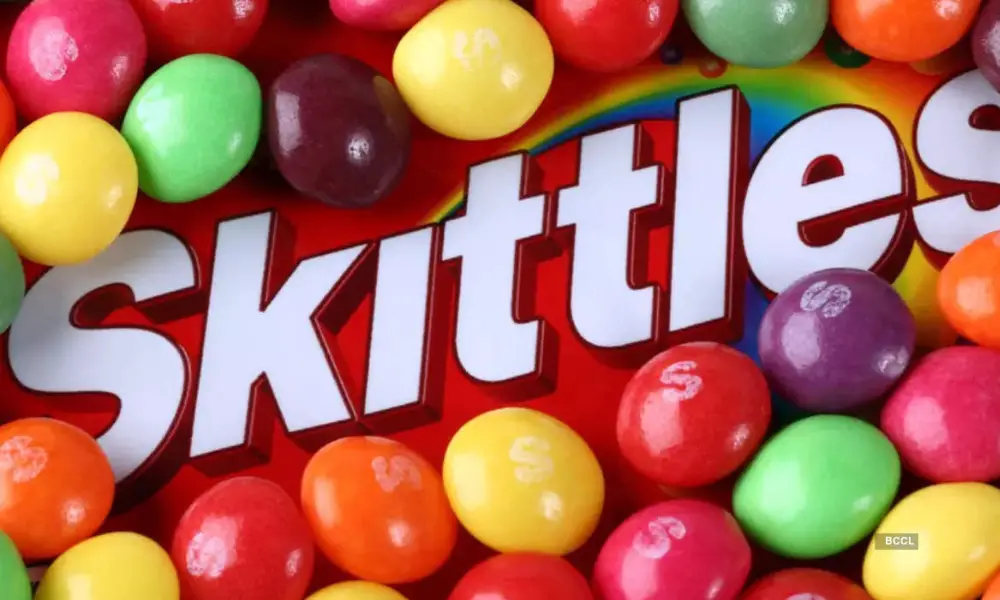Learn how to make freeze-dried Skittles from scratch at home! You can also get your bags of these tasty treats from the grocery store! In this article, you’ll learn these sweet treats’ ingredients, process, and taste! Once you know how to make freeze-dried Skittles, you can enjoy them in no time! Continue reading for more information! – What’s the Best Way to Make Freeze Dried Skittles?

What are Skittles?
The Wrigley Company, a part of Mars, Inc., creates and markets Skittles, a line of multicolored, fruit-flavored buttons. Similar to M&Ms, which include the letter “M,” Skittles are made of hard sugar shells embossed with the word “S.” Fruit juice, citric acid, natural and artificial flavors, sugar, corn syrup, and hydrogenated palm kernel oil make up the majority of the inside. The flavor collections of Skittles that are available for purchase include Tropical, Wild Berry, Dessert, Sweet Heat, Smoothie, and Sour.
How to Make Freeze Dried Skittles?
A freeze drier is necessary to make this exquisite delicacy. The Harvest Right Freeze Dryer comes highly recommended, preferably with the oil-free pump. Although more expensive and not essential, the oil-free pump is unquestionably advantageous. Although the oil-free pump is quieter, it does away with the requirement to purchase and replace the unit’s oil.
The more Skittles, in my opinion, the better. I can fit five trays of Skittles in my freeze dryer. Therefore, I usually stock all five trays with Skittles. I usually purchase two or three 50 oz. Bulk Skittles bags from Walmart; either flavor is delicious. I can use one bulk to fill two trays.
Direction:
Remember that this is the TOP-SECRET method for manufacturing freeze-dried Skittles. When it can be completed in 5 to 6 hours, there is no reason to wait more than 20 hours!
Step 1: Freeze Dry
Okay, but wait—what? Yes. Make a batch of diced ham or shredded cheese, for instance (both super great to have in food storage.) Complete a complete cycle of whatever else you feel like freeze drying. Complete a complete cycle of whatever else you feel like freeze drying.
Step 2: Remove the Drain Valve and Provide “More Dry Time”
When the cycle is over, as previously mentioned… If your food is ready, release the drain valve and take the frozen food trays out of the freezer. To extend the dry time, click.
Step 3: Add Trays of Skittles to the Freezer Dryer
Skittles do not require a full freeze drying cycle; therefore, they are added at the very end, merely for drying. At the conclusion, you receive a complete batch of food AND an additional batch of Skittles! You can save countless hours by doing that. You can save countless hours by doing that.
Some folks will advise you to keep your Skittles separated from one another on the trays since they tend to pop open (enlarge.) Don’t stress over that. Just keep in mind that the more Skittles you have, the better. I stuff my trays to the point where hardly any room is left. And some of the Skittles are lying on top of one another. To do is safe, and I ensure the overlapping Skittles don’t rise above the trays’ rims. One 50 oz bag of Skittles will fill at least one and a half trays or two full trays if you’re using a Harvest Right freeze dryer, as I do.
Due to their proximity, some Skittles may become stuck together, but once the procedure is complete, they are SO simple to separate in your hand rapidly.
Step 4: Signify the Door, Seal the Drain, and Allow Six Hours for Drying
Add 6 hours of drying time when the Skittles trays are in the freeze drier, replace the soft seal over the door opening, close the door, and close the drain, then sit back and watch the machine do its magic! You can package the food you just took out of the freeze dryer in the interim. If your luck holds, you’ll be able to have a freeze-dried supper AND dessert from one full cycle, owing to the different food.
Step 5: Savor the Rainbow! Packages the Rest
Let’s imagine that your six hours of sleep cease in the middle of the night. Do you need to set the alarm and get up in the morning to remove it? No. You’re good. It will be kept for you by the freeze dryer until morning. When I do so, I’ve found that the Skittles slightly (but not significantly) expand. It’s worthwhile to avoid nighttime awakenings.
When you take many hours to take them out of the dryer, the only thing that counts is that they will start to get a little sticky.
If so, all you have to do to make them less sticky is leave them on the counter for a few hours. You can then package them after that.
The Skittles are typically not sticky if you take them out right away. However, if they are, as previously said, leave them on the counter for a short while; the stickiness won’t remain long.
Usually, when I package the Skittles, I put them in mason jars or mylar bags. I won’t bother to add an oxygen absorber when packaging if I want to give a jar to a neighbor shortly or bring a bag of Skittles on a forthcoming road trip. However, I will add an oxygen absorber to the Skittles if I plan to store them or if I don’t anticipate opening the package for a while to preserve them nice and crunchy. Ah, that’s correct. They are crispy if you haven’t tried them yet. You’ll enjoy it!
Are Skittles a Cancer Risk?
Rats, mice, and hamsters have developed cancer after inhaling ultra-fine and pigment-grade titanium dioxide particles. As a result, titanium dioxide is thought to be potentially carcinogenic to people when inhaled.
Although the precise link between titanium dioxide inhalation and human cancer is yet unknown, people who work in industrial environments where titanium dioxide is produced may be at an increased risk for cancer development. No proof eating Skittles contributes to the development of cancer in humans; however, inhaling titanium dioxide may increase cancer risk in some people.
Are Skittles Vegan?
A vegan diet forgoes any foods derived from animals, including meat, fish, dairy, and eggs, with the general intention of causing the fewest amount of suffering to animals as possible.
Vegan diets may contain manufactured or packaged foods like confectionery, although frequently focusing on entire plant meals.
Some candies are created with animal products, such as milk chocolate, cream, or other dairy-based ingredients. Some, like Skittles, are less visible, and you might worry if they’re okay to eat vegan.
Vegan Status
Skittles may or may not be regarded as vegan, depending on the components. The following ingredients are present in Skittles with the original flavor as of 2020:
Sugar. Sugar cane stalks are the source of the traditional white sugar used in candies like Skittles. This sugar is processed into smaller, whiter granules.
Sugar corn. This syrup, also known as glucose syrup and manufactured from maize starch, is used in Skittles to soften, add volume, enhance flavor, and prevent sugar crystallization.
Coconut oil: Coconut oil that has been hydrogenated. This plant oil was extracted from the kernel of the Elaeis guineensis oil palm plant. It improves the flavor and texture of confectionery.
Acidic citrus. Citric acid, naturally present in citrus fruits, is synthesized and added to candies to increase acidity, enhance flavor, and preserve the components.
Dextrin from tapioca. A starch extract from the yucca plant or cassava root is used here. It assists in maintaining flavor and color preservation and serves as a sticky candy covering in Skittles.
Corn starch: Altered corn starch This emulsifier and gelling ingredient, derived from corn, helps give Skittles their gumminess.
Both natural and synthetic tastes. Although the specifics of these flavors are usually kept under wraps, considering that Skittles’ flavors are fruit-based, it is safe to presume that they either originate from real fruit or were synthesized to taste like it.
Colors. These are made from petroleum-based raw materials. In addition to titanium dioxide, Skittles also contain Red 40 Lake, Red 40, Yellow 5 Lake, Yellow 5, Yellow 6 Lake, Yellow 6, Blue 2 Lake, Blue 1 Lake, and Red 40.
Citrate of sodium This is citric acid’s sodium salt, which adds a sour flavor and serves as a preservative.
The carnauba wax. This is made from the wax in the Copernicia prunifera palm tree leaves. It is used in sweets to keep coatings glossy and protect them from melting.
The ingredients of other Skittles flavors, including sour, tropical, and wild berry, are identical, but the natural and artificial flavorings and the colors may vary.
However, it is possible that special edition, limited-edition tastes may contain substances derived from animals that are absent from the more popular varieties. Reading the ingredient list is therefore recommended.
Gelatin, a substance used to give dishes a chewy, gel-like texture, is made from animal collagen, a protein in connective tissues. Skittles used to contain gelatin, which is not a vegan ingredient, up until about 2010. Since then, the maker of Skittles has eliminated the gelatin.
A red pigment derived from the Dactylopius coccus beetle, carmine, often known as E120 or cochineal, was also an ingredient in Skittles produced in the UK up until 2015.
Even though Skittles are no longer made with substances originating from animals, some vegans might be worried about using white sugar.
This is because refined cane sugar may be processed using animal bone char to eliminate impurities and turn it white by removing sugar’s natural hue. But there are no signs of animal life in the finished product.
Still, unless the food or confectionery is labeled as organic, it is impossible to tell if bone char was utilized. This is so because bone char is not included in the National List of Allowable Substances of the National Organic Program.
Conclusion
Freeze-dried Skittles are an interesting and delicious treat. These candy pieces have been frozen quickly to a very low temperature and come out crunchy and full of flavor. The inside filling expands and becomes nearly double the size of the Skittle. While they still have the same great taste as the original, the lite texture makes for a fun snack. The process of freeze drying makes the Skittles more palatable than ever before.

